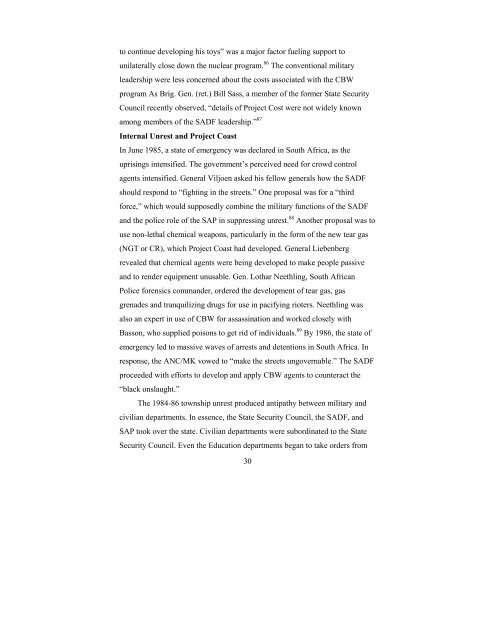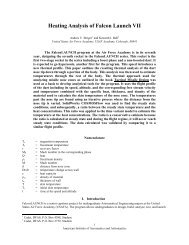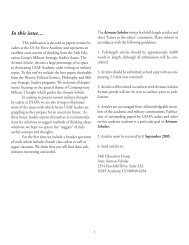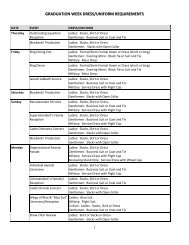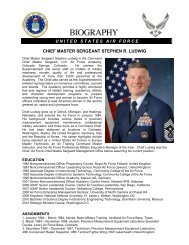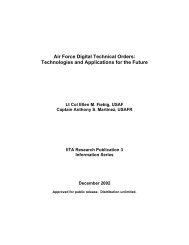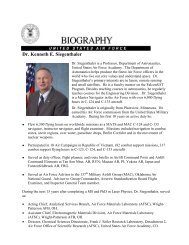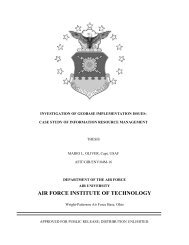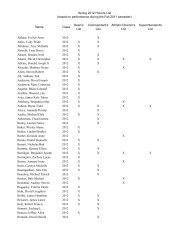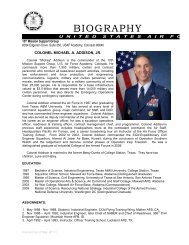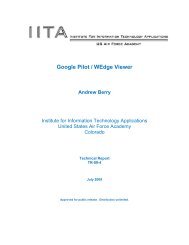the rollback of south africa's biological warfare program
the rollback of south africa's biological warfare program
the rollback of south africa's biological warfare program
You also want an ePaper? Increase the reach of your titles
YUMPU automatically turns print PDFs into web optimized ePapers that Google loves.
to continue developing his toys” was a major factor fueling support to<br />
unilaterally close down <strong>the</strong> nuclear <strong>program</strong>. 86 The conventional military<br />
leadership were less concerned about <strong>the</strong> costs associated with <strong>the</strong> CBW<br />
<strong>program</strong> As Brig. Gen. (ret.) Bill Sass, a member <strong>of</strong> <strong>the</strong> former State Security<br />
Council recently observed, “details <strong>of</strong> Project Cost were not widely known<br />
among members <strong>of</strong> <strong>the</strong> SADF leadership.” 87<br />
Internal Unrest and Project Coast<br />
In June 1985, a state <strong>of</strong> emergency was declared in South Africa, as <strong>the</strong><br />
uprisings intensified. The government’s perceived need for crowd control<br />
agents intensified. General Viljoen asked his fellow generals how <strong>the</strong> SADF<br />
should respond to “fighting in <strong>the</strong> streets.” One proposal was for a “third<br />
force,” which would supposedly combine <strong>the</strong> military functions <strong>of</strong> <strong>the</strong> SADF<br />
and <strong>the</strong> police role <strong>of</strong> <strong>the</strong> SAP in suppressing unrest. 88 Ano<strong>the</strong>r proposal was to<br />
use non-lethal chemical weapons, particularly in <strong>the</strong> form <strong>of</strong> <strong>the</strong> new tear gas<br />
(NGT or CR), which Project Coast had developed. General Liebenberg<br />
revealed that chemical agents were being developed to make people passive<br />
and to render equipment unusable. Gen. Lothar Neethling, South African<br />
Police forensics commander, ordered <strong>the</strong> development <strong>of</strong> tear gas, gas<br />
grenades and tranquilizing drugs for use in pacifying rioters. Neethling was<br />
also an expert in use <strong>of</strong> CBW for assassination and worked closely with<br />
Basson, who supplied poisons to get rid <strong>of</strong> individuals. 89 By 1986, <strong>the</strong> state <strong>of</strong><br />
emergency led to massive waves <strong>of</strong> arrests and detentions in South Africa. In<br />
response, <strong>the</strong> ANC/MK vowed to “make <strong>the</strong> streets ungovernable.” The SADF<br />
proceeded with efforts to develop and apply CBW agents to counteract <strong>the</strong><br />
“black onslaught.”<br />
The 1984-86 township unrest produced antipathy between military and<br />
civilian departments. In essence, <strong>the</strong> State Security Council, <strong>the</strong> SADF, and<br />
SAP took over <strong>the</strong> state. Civilian departments were subordinated to <strong>the</strong> State<br />
Security Council. Even <strong>the</strong> Education departments began to take orders from<br />
30


